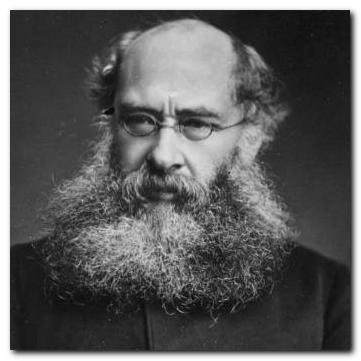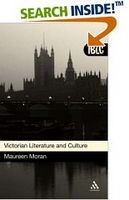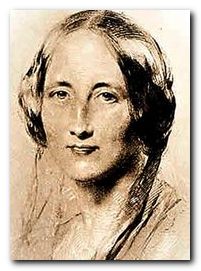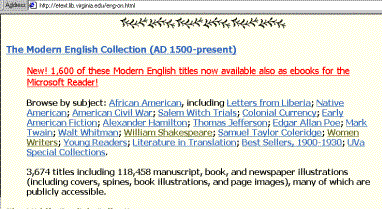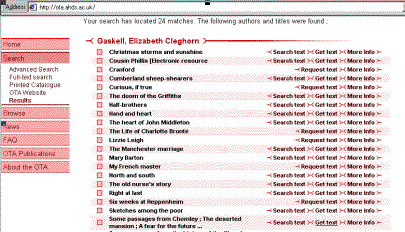a famous critical essay on literary theory
[Published in Longman’s Magazine 4 (September 1884), and re-printed in Partial Portraits(1888). The Art of Fiction is the essay that Robert Louis Stevenson answers in his ‘A Humble Remonstrance’, published in the next number of Longman’s Magazine (December 1884)]
NB. The paragraphs really are that long!
I SHOULD not have affixed so comprehensive a title to these few remarks, necessarily wanting in any completeness, upon a subject the full consideration of which would carry us far, did I not seem to discover a pretext for my temerity in the interesting pamphlet lately published under this name by Mr. Walter Besant. Mr. Besant’s lecture at the Royal Institution-the original form of his pamphlet-appears to indicate that many persons are interested in the art of fiction and are not indifferent to such remarks as those who practise it may attempt to make about it. I am therefore anxious not to lose the benefit of this favourable association, and to edge in a few words under cover of the attention which Mr. Besant is sure to have excited. There is something very encouraging in his having put into form certain of his ideas on the mystery of story-telling. It is a proof of life and curiosity-curiosity on the part of the brotherhood of novelists, as well as on the part of their readers. Only a short time ago it might have been supposed that the English novel was not what the French call discutable. It had no air of having a theory, a conviction, a consciousness of itself behind it-of being the expression of an artistic faith, the result of choice and comparison. I do not say it was necessarily the worse for that; it would take much more courage than I possess to intimate that the form of the novel, as Dickens and Thackeray (for instance) saw it had any taint of incompleteness. It was, however, naïf (if I may help myself out with another French word); and, evidently, if it is destined to suffer in any way for having lost its naïveté it has now an idea of making sure of the corresponding advantages During the period I have alluded to there was a comfortable, good-humoured feeling abroad that a novel is a novel, as a pudding is a pudding, and that this was the end of it. But within a year or two, for some reason or other, there have been signs of returning animation-the era of discussion would appear to have been to a certain extent opened. Art lives upon discussion, upon experiment, upon curiosity, upon variety of attempt, upon the exchange of views and the comparison of standpoints; and there is a presumption that those times when no one has anything particular to say about it, and has no reason to give for practice or preference, though they may be times of genius, are not times of development, are times possibly even, a little, of dulness. The successful application of any art is a delightful spectacle, but the theory, too, is interesting; and though there is a great deal of the latter without the former, I suspect there has never been a genuine success that has not had a latent core of conviction. Discussion, suggestion, formulation, these things are fertilizing when they are frank and sincere. Mr. Besant has set an excellent example in saying what he thinks, for his part, about the way in which fiction should be written, as well as about the way in which it should be published; for his view of the ‘art,’ carried on into an appendix, covers that too. Other labourers in the same field will doubtless take up the argument, they will give it the light of their experience, and the effect will surely be to make our interest in the novel a little more what it had for some time threatened to fail to be a serious, active, inquiring interest, under protection of which this delightful study may, in moments of confidence, venture to say a little more what it thinks of itself. It must take itself seriously for the public to take it so. The old superstition about fiction being ‘wicked’ has doubtless died out in England; but the spirit of it lingers in a certain oblique regard directed toward any story which does not more or less admit that it is only a joke. Even the most jocular novel feels in some degree the weight of the proscription that was formerly directed against literary levity; the jocularity does not always succeed in passing for gravity. It is still expected, though perhaps people are ashamed to say it, that a production which is after all only a ‘make believe’ (for what else is a ‘story’?) shall be in some degree apologetic-shall renounce the pretension of attempting really to compete with life. This, of course, any sensible wide-awake story declines to do, for it quickly perceives that the tolerance granted to it on such a condition is only an attempt to stifle it, disguised in the form of generosity. The old Evangelical hostility to the novel, which was as explicit as it was narrow, and which regarded it as little less favourable to our immortal part than a stage-play, was in reality far less insulting. The only reason for the existence of a novel is that it does compete with life. When it ceases to compete as the canvas of the painter competes, it will have arrived at a very strange pass. It is not expected of the picture that it will make itself humble in order to be forgiven; and the analogy between the art of the painter and the art of the novelist is, so far as I am able to see, complete. Their inspiration is the same, their process (allowing for the different quality of the vehicle) is the same, their success is the same. They may learn from each other, they may explain and sustain each other. Their cause is the same, and the honour of one is the honour of another. Peculiarities of manner, of execution, that correspond on either side, exist in each of them and contribute to their development. The Mahometans think a picture an unholy thing, but it is a long time since any Christian did, and it is therefore the more odd that in the Christian mind the traces (dissimulated though they may be) of a suspicion of the sister art should linger to this day. The only effectual way to lay it to rest is to emphasize the analogy to which I just alluded-to insist on the fact that as the picture is reality, so the novel is history. That is the only general description (which does it justice) that we may give the novel. But history also is allowed to compete with life, as I say; it is not, any more than painting, expected to apologize. The subject-matter of fiction is stored up likewise in documents and records, and if it will not give itself away, as they say in California, it must speak with assurance, with the tone of the historian. Certain accomplished novelists have a habit of giving themselves away which must often bring tears to the eyes of people who take their fiction seriously. I was lately struck, in reading over many pages of Anthony Trollope, with his want of discretion in this particular. In a digression, a parenthesis or an aside, he concedes to the reader that he and this trusting friend are only ‘making believe.’ He admits that the events he narrates have not really happened, and that he can give his narrative any turn the reader may like best. Such a betrayal of a sacred office seems to me, I confess, a terrible crime; it is what I mean by the attitude of apology, and it shocks me every whit as much in Trollope as it would have shocked me in Gibbon or Macaulay. It implies that the novelist is less occupied in looking for the truth than the historian, and in doing so it deprives him at a stroke of all his standing-room. To represent and illustrate the past, the actions of men, is the task of either writer, and the only difference that I can see is, in proportion as he succeeds, to the honour of the novelist, consisting as it does in his having more difficulty in collecting his evidence, which is so far from being purely literary. It seems to me to give him a great character, the fact that he has at once so much in common with the philosopher and the painter; this double analogy is a magnificent heritage. It is of all this evidently that Mr. Besant is full when he insists upon the fact that fiction is one of the fine arts, deserving in its turn of all the honours and emoluments that have hitherto been reserved for the successful profession of music, poetry, painting, architecture. It is impossible to insist too much on so important a truth, and the place that Mr. Besant demands for the work of the novelist may be represented, a trifle less abstractly, by saying that he demands not only that it shall be reputed artistic, but that it shall be reputed very artistic indeed. It is excellent that he should have struck this note, for his doing so indicates that there was need of it, that his proposition may be to many people a novelty. One rubs one’s eyes at the thought; but the rest of Mr. Besant’s essay confirms the revelation. I suspect, in truth, that it would be possible to confirm it still further, and that one would not be far wrong in saying that in addition to the people to whom it has never occurred that a novel ought to be artistic, there are a great many others who, if this principle were urged upon them, would be filled with an indefinable mistrust. They would find it difficult to explain their repugnance, but it would operate strongly to put them on their guard. ‘Art,’ in our Protestant communities, where so many things have got so strangely twisted about, is supposed, in certain circles, to have some vaguely injurious effect upon those who make it an important consideration, who let it weigh in the balance. It is assumed to be opposed in some mysterious manner to morality, to amusement, to instruction. When it is embodied in the work of the painter (the sculptor is another affair!) you know what it is; it stands there before you, in the honesty of pink and green and a gilt frame; you can see the worst of it at a glance, and you can be on your guard. But when it is introduced into literature it becomes more insidious-there is danger of its hurting you before you know it. Literature should be either instructive or amusing, and there is in many minds an impression that these artistic preoccupations, the search for form, contribute to neither end, interfere indeed with both. They are too frivolous to be edifying, and too serious to be diverting; and they are, moreover, priggish and paradoxical and superfluous. That, I think, represents the manner in which the latent thought of many people who read novels as an exercise in skipping would explain itself if it were to become articulate. They would argue, of course, that a novel ought to be ‘good,’ but they would interpret this term in a fashion of their own, which, indeed, would vary considerably from one critic to another. One would say that being good means representing virtuous and aspiring characters, placed in prominent positions; another would say that it depends for a ‘happy ending’ on a distribution at the last of prizes, pensions, husbands, wives, babies, millions, appended paragraphs and cheerful remarks. Another still would say that it means being full of incident and movement, so that we shall wish to jump ahead, to see who was the mysterious stranger, and if the stolen will was ever found, and shall not be distracted from this pleasure by any tiresome analysis or ‘description.’ But they would all agree that the ‘artistic’ idea would spoil some of their fun. One would hold it accountable for all the description, another would see it revealed in the absence of sympathy. Its hostility to a happy ending would be evident, and it might even, in some cases, render any ending at all impossible. The ‘ending’ of a novel is, for many persons, like that of a good dinner, a course of dessert and ices, and the artist in fiction is regarded as a sort of meddlesome doctor who forbids agreeable aftertastes. It is therefore true that this conception of Mr. Besant’s, of the novel as a superior form, encounters not only a negative but a positive indifference. It matters little that, as a work of art, it should really be as little or as much concerned to supply happy endings, sympathetic characters, and an objective tone, as if it were a work of mechanics; the association of ideas, however incongruous, might easily be too much for it if an eloquent voice were not sometimes raised to call attention to the fact that it is at once as free and as serious a branch of literature as any other. Certainly, this might sometimes be doubted in presence of the enormous number of works of fiction that appeal to the credulity of our generation, for it might easily seem that there could be no great substance in a commodity so quickly and easily produced. It must be admitted that good novels are somewhat compromised by bad ones, and that the field, at large, suffers discredit from overcrowding. I think, however, that this injury is only superficial, and that the superabundance of written fiction proves nothing against the principle itself. It has been vulgarised, like all other kinds of literature, like everything else, to-day, and it has proved more than some kinds accessible to vulgarisation. But there is as much difference as there ever was between a good novel and a bad one: the bad is swept, with all the daubed canvases and spoiled marble, into some unvisited limbo or infinite rubbish-yard, beneath the back-windows of the world, and the good subsists and emits its light and stimulates our desire for perfection. As I shall take the liberty of making but a single criticism of Mr. Besant, whose tone is so full of the love of his art, I may as well have done with it at once. He seems to me to mistake in attempting to say so definitely beforehand what sort of an affair the good novel will be. To indicate the danger of such an error as that has been the purpose of these few pages; to suggest that certain traditions on the subject, applied a priori, have already had much to answer for, and that the good health of an art which undertakes so immediately to reproduce life must demand that it be perfectly free. It lives upon exercise, and the very meaning of exercise is freedom. The only obligation to which in advance we may hold a novel without incurring the accusation of being arbitrary, is that it be interesting. That general responsibility rests upon it, but it is the only one I can think of. The ways in which it is at liberty to accomplish this result (of interesting us) strike me as innumerable and such as can only suffer from being marked out, or fenced in, by prescription. They are as various as the temperament of man, and they are successful in proportion as they reveal a particular mind, different from others. A novel is in its broadest definition a personal impression of life; that, to begin with, constitutes its value, which is greater or less according to the intensity of the impression. But there will be no intensity at all, and therefore no value, unless there is freedom to feel and say. The tracing of a line to be followed, of a tone to be taken, of a form to be filled out, is a limitation of that freedom and a suppression of the very thing that we are most curious about. The form, it seems to me, is to be appreciated after the fact; then the author’s choice has been made, his standard has been indicated; then we can follow lines and directions and compare tones. Then, in a word, we can enjoy one of the most charming of pleasures, we can estimate quality, we can apply the test of execution. The execution belongs to the author alone; it is what is most personal to him, and we measure him by that. The advantage, the luxury, as well as the torment and responsibility of the novelist, is that there is no limit to what he may attempt as an executant – no limit to his possible experiments, efforts, discoveries, successes. Here it is especially that he works, step by step, like his brother of the brush, of whom we may always say that he has painted his picture in a manner best known to himself. His manner is his secret, not necessarily a deliberate one. He cannot disclose it, as a general thing, if he would; he would be at a loss to teach it to others. I say this with a due recollection of having insisted on the community of method of the artist who paints a picture and the artist who writes a novel. The painter is able to teach the rudiments of his practice, and it is possible, from the study of good work (granted the aptitude), both to learn how to paint and to learn how to write. Yet it remains true, without injury to the rapprochement, that the literary artist would be obliged to say to his pupil much more than the other, ‘Ah, well, you must do it as you can !’ It is a question of degree, a matter of delicacy. If there are exact sciences there are also exact arts, and the grammar of painting is so much more definite that it makes the difference. I ought to add, however, that if Mr. Besant says at the beginning of his essay that the ‘laws of fiction may be laid down and taught with as much precision and exactness as the laws of harmony, perspective, and proportion,’ he mitigates what might appear to be an over-statement by applying his remark to ‘general’ laws, and by expressing most of these rules in a manner with which it would certainly be unaccommodating to disagree. That the novelist must write from his experience, that his ‘characters must be real and such as might be met with in actual life;’ that ‘a young lady brought up in a quiet country village should avoid descriptions of garrison life,’ and ‘a writer whose friends and personal experiences belong to the lower middle-class should carefully avoid introducing his characters into Society;’ that one should enter one’s notes in a common-place book; that one’s figures should be clear in outline; that making them clear by some trick of speech or of carriage is a bad method, and ‘describing them at length’ is a worse one; that English Fiction should have a ‘conscious moral purpose;’ that ‘it is almost impossible to estimate too highly the value of careful workmanship-that is, of style;’ that ‘the most important point of all is the story,’ that ‘the story is everything’-these are principles with most of which it is surely impossible not to sympathise. That remark about the lower middle-class writer and his knowing his place is perhaps rather chilling; but for the rest, I should find it difficult to dissent from any one of these recommendations. At the same time I should find it difficult positively to assent to them, with the exception, perhaps, of the injunction as to entering one’s notes in a common-place book. They scarcely seem to me to have the quality that Mr. Besant attributes to the rules of the novelist-the ‘precision and exactness’ of ‘the laws of harmony, perspective, and proportion.’ They are suggestive, they are even inspiring, but they are not exact, though they are doubtless as much so as the case admits of; which is a proof of that liberty of interpretation for which I just contended. For the value of these different injunctions-so beautiful and so vague-is wholly in the meaning one attaches to them. The characters, the situation, which strike one as real will be those that touch and interest one most, but the measure of reality is very difficult to fix. The reality of Don Quixote or of Mr. Micawber is a very delicate shade; it is a reality so coloured by the author’s vision that, vivid as it may be, one would hesitate to propose it as a model; one would expose one’s self to some very embarrassing questions on the part of a pupil. It goes without saying that you will not write a good novel unless you possess the sense of reality; but it will be difficult to give you a recipe for calling that sense into being. Humanity is immense and reality has a myriad forms; the most one can affirm is that some of the flowers of fiction have the odour of it, and others have not; as for telling you in advance how your nosegay should be composed, that is another affair. It is equally excellent and inconclusive to say that one must write from experience; to our supposititious aspirant such a declaration might savour of mockery. What kind of experience is intended, and where does it begin and end? Experience is never limited and it is never complete; it is an immense sensibility, a kind of huge spider-web, of the finest silken threads, suspended in the chamber of consciousness and catching every air-borne particle in its tissue. It is the very atmosphere of the mind; and when the mind is imaginative much more when it happens to be that of a man of genius-it takes to itself the faintest hints of life, it converts the very pulses of the air into revelations. The young lady living in a village has only to be a damsel upon whom nothing is lost to make it quite unfair (as it seems to me) to declare to her that she shall have nothing to say about the military. Greater miracles have been seen than that, imagination assisting, she should speak the truth about some of these gentlemen. I remember an English novelist, a woman of genius, telling me that she was much commended for the impression she had managed to give in one of her tales of the nature and way of life of the French Protestant youth. She had been asked where she learned so much about this recondite being, she had been congratulated on her peculiar opportunities. These opportunities consisted in her having once, in Paris, as she ascended a staircase, passed an open door where, in the household of a pasteur, some of the young Protestants were seated at table round a finished meal. The glimpse made a picture; it lasted only a moment, but that moment was experience. She had got her impression, and she evolved her type. She knew what youth was, and what Protestantism; she also had the advantage of having seen what it was to be French; so that she converted these ideas into a concrete image and produced a reality. Above all, however, she was blessed with the faculty which when you give it an inch takes an ell, and which for the artist is a much greater source of strength than any accident of residence or of place in the social scale. The power to guess the unseen from the seen, to trace the implication of things, to judge the whole piece by the pattern, the condition of feeling life, in general, so completely that you are well on your way to knowing any particular corner of it-this cluster of gifts may almost be said to constitute experience, and they occur in country and in town, and in the most differing stages of education. If experience consists of impressions, it may be said that impressions are experience, just as (have we not seen it?) they are the very air we breathe. Therefore, if I should certainly say to a novice, ‘Write from experience, and experience only,’ I should feel that this was a rather tantalising monition if I were not careful immediately to add, ‘Try to be one of the people on whom nothing is lost!’ I am far from intending by this to minimise the importance of exactness-of truth of detail. One can speak best from one’s own taste, and I may therefore venture to say that the air of reality (solidity of specification) seems to me to be the supreme virtue of a novel-the merit on which all its other merits (including that conscious moral purpose of which Mr. Besant speaks) helplessly and submissively depend. If it be not there, they are all as nothing, and if these be there, they owe their effect to the success with which the author has produced the illusion of life. The cultivation of this success, the study of this exquisite process, form, to my taste, the beginning and the end of the art of the novelist. They are his inspiration, his despair, his reward, his torment, his delight. It is here, in very truth, that he competes with life; it is here that he competes with his brother the painter, in his attempt to render the look of things, the look that conveys their meaning, to catch the colour, the relief, the expression, the surface, the substance of the human spectacle. It is in regard to this that Mr. Besant is well inspired when he bids him take notes. He cannot possibly take too many, he cannot possibly take enough. All life solicits him, and to ‘render’ the simplest surface, to produce the most momentary illusion, is a very complicated business. His case would be easier, and the rule would be more exact, if Mr. Besant had been able to tell him what notes to take. But this I fear he can never learn in any hand-book; it is the business of his life. He has to take a great many in order to select a few, he has to work them up as he can, and even the guides and philosophers who might have most to say to him must leave him alone when it comes to the application of precepts, as we leave the painter in communion with his palette. That his characters ‘must be clear in outline,’ as Mr. Besant says-he feels that down to his boots; but how he shall make them so is a secret between his good angel and himself. It would be absurdly simple if he could be taught that a great deal of ‘description’ would make them so, or that, on the contrary, the absence of description and the cultivation of dialogue, or the absence of dialogue and the multiplication of ‘incident,’ would rescue him from his difficulties. Nothing, for instance, is more possible than that he be of a turn of mind for which this odd, literal opposition of description and dialogue, incident and description, has little meaning and light. People often talk of these things as if they had a kind of internecine distinctness, instead of melting into each other at every breath and being intimately associated parts of one general effort of expression. I cannot imagine composition existing in a series of blocks, nor conceive, in any novel worth discussing at all, of a passage of description that is not in its intention narrative, a passage of dialogue that is not in its intention descriptive, a touch of truth of any sort that does not partake of the nature of incident, and an incident that derives its interest from any other source than the general and only source of the success of a work of art-that of being illustrative. A novel is a living thing, all one and continuous, like every other organism, and in proportion as it lives will it be found, I think, that in each of the parts there is something of each of the other parts. The critic who over the close texture of a finished work will pretend to trace a geography of items will mark some frontiers as artificial, I fear, as any that have been known to history. There is an old-fashioned distinction between the novel of character and the novel of incident, which must have cost many a smile to the intending romancer who was keen about his work. It appears to me as little to the point as the equally celebrated distinction between the novel and the romance- to answer as little to any reality. There are bad novels and good novels, as there are bad pictures and good pictures; but that is the only distinction in which I see any meaning, and I can as little imagine speaking of a novel of character as I can imagine speaking of a picture of character. When one says picture, one says of character, when one says novel, one says of incident, and the terms may be transposed. What is character but the determination of incident? What is incident but the illustration of character? What is a picture or a novel that is not of character? What else do we seek in it and find in it? It is an incident for a woman to stand up with her hand resting on a table and look out at you in a certain way; or if it be not an incident, I think it will be hard to say what it is. At the same time it is an expression of character. If you say you don’t see it (character in that–allons donc!) this is exactly what the artist who has reasons of his own for thinking he does see it undertakes to show you. When a young man makes up his mind that he has not faith enough, after all, to enter the Church, as he intended, that is an incident, though you may not hurry to the end of the chapter to see whether perhaps he doesn’t change once more. I do not say that these are extraordinary or startling incidents. I do not pretend to estimate the degree of interest proceeding from them, for this will depend upon the skill of the painter. It sounds almost puerile to say that some incidents are intrinsically much more important than others, and I need not take this precaution after having professed my sympathy for the major ones in remarking that the only classification of the novel that I can understand is into the interesting and the uninteresting.
The novel and the romance, the novel of incident and that of character-these separations appear to me to have been made by critics and readers for their own convenience, and to help them out of some of their difficulties, but to have little reality or interest for the producer, from whose point of view it is, of course, that we are attempting to consider the art of fiction. The case is the same with another shadowy category, which Mr. Besant apparently is disposed to set up-that of the ‘modern English novel;’ unless, indeed, it be that in this matter he has fallen into an accidental confusion of standpoints. It is not quite clear whether he intends the remarks in which he alludes to it to be didactic or historical. It is as difficult to suppose a person intending to write a modern English, as to suppose him writing an ancient English, novel; that is a label which begs the question. One writes the novel, one paints the picture, of one’s language and of one’s time, and calling it modern English will not, alas ! make the difficult task any easier. No more, unfortunately, will calling this or that work of one’s fellow artist a romance-unless it be, of course, simply for the pleasantness of the thing, as, for instance, when Hawthorne gave this heading to his story of Blithedale. The French, who have brought the theory of fiction to remarkable completeness, have but one word for the novel, and have not attempted smaller things in it, that I can see, for that. I can think of no obligation to which the ‘romancer’ would not be held equally with the novelist; the standard of execution is equally high for each. Of course it is of execution that we are talking-that being the only point of a novel that is open to contention. This is perhaps too often lost sight of, only to produce interminable confusions and cross-purposes. We must grant the artist his subject, his idea, what the French call his donnée; our criticism is applied only to what he makes of it. Naturally I do not mean that we are bound to like it or find it interesting: in case we do not our course is perfectly simple-to let it alone. We may believe that of a certain idea even the most sincere novelist can make nothing at all, and the event may perfectly justify our belief; but the failure will have been a failure to execute, and it is in the execution that the fatal weakness is recorded. If we pretend to respect the artist at all we must allow him his freedom of choice, in the face, in particular cases, of innumerable presumptions that the choice will not fructify. Art derives a considerable part of its beneficial exercise from flying in the face of presumptions, and some of the most interesting experiments of which it is capable are hidden in the bosom of common things. Gustave Flaubert has written a story about the devotion of a servant-girl to a parrot, and the production, highly finished as it is, cannot on the whole be called a success. We are perfectly free to find it flat, but I think it might have been interesting; and I, for my part, am extremely glad he should have written it; it is a contribution to our knowledge of what can be done or what cannot. Ivan Turgénieff has written a tale about a deaf and dumb serf and a lap-dog, and the thing is touching, loving, a little masterpiece. He struck the note of life where Gustave Flaubert missed it-he flew in the face of a presumption and achieved a victory. Nothing, of course, will ever take the place of the good old fashion of ‘liking’ a work of art or not liking it; the more improved criticism will not abolish that primitive, that ultimate, test. I mention this to guard myself from the accusation of intimating that the idea, the subject, of a novel or a picture, does not matter. It matters, to my sense, in the highest degree, and if I might put up a prayer it would be that artists should select none but the richest. Some, as I have already hastened to admit, are much more substantial than others , and it would be a happily arranged world in which persons intending to treat them should be exempt from confusions and mistakes. This fortunate condition will arrive only, I fear, on the same day that critics become purged from error. Meanwhile, I repeat, we do not judge the artist with fairness unless we say to him, ‘Oh, I grant you your starting point, because if I did not I should seem to prescribe to you, and heaven forbid I should take that responsibility. If I pretend to tell you what you must not take, you will call upon me to tell you then what you must take; in which case I shall be nicely caught! Moreover, it isn’t till I have accepted your data that I can begin to measure you. I have the standard; I judge you by what you propose, and you must look out for me there. Of course I may not care for your idea at all; I may think it silly, or stale, or unclean; in which case I wash my hands of you altogether. I may content myself with believing that you will not have succeeded in being interesting, but I shall of course not attempt to demonstrate it, and you will be as indifferent to me as I am to you. I needn’t remind you that there are all sorts of tastes: who can know it better? Some people, for excellent reasons, don’t like to read about carpenters; others, for reasons even better, don’t like to read about courtesans. Many object to Americans. Others (I believe they are mainly editors and publishers) won’t look at Italians. Some readers don’t like quiet subjects; others don’t like bustling ones. Some enjoy a complete illusion; others revel in a complete deception. They choose their novels accordingly, and if they don’t care about your idea they won’t, a fortiori, care about your treatment.’
So that it comes back very quickly, as I have said, to the liking; in spite of M. Zola, who reasons less powerfully than he represents, and who will not reconcile himself to this absoluteness of taste, thinking that there are certain things that people ought to like, and that they can be made to like. I am quite at a loss to imagine anything (at any rate in this matter of fiction) that people ought to like or to dislike. Selection will be sure to take care of itself, for it has a constant motive behind it. That motive is simply experience. As people feel life, so they will feel the art that is most closely related to it. This closeness of relation is what we should never forget in talking of the effort of the novel. Many people speak of it as a factitious, artificial form, a product of ingenuity, the business of which is to alter and arrange the things that surround us, to translate them into conventional, traditional moulds. This, however, is a view of the matter which carries us but a very short way, condemns the art to an eternal repetition of a few familiar clichés, cuts short its development, and leads us straight up to a dead wall. Catching the very note and trick, the strange irregular rhythm of life, that is the attempt whose strenuous force keeps Fiction upon her feet. In proportion as in what she offers us we see life without rearrangement do we feel that we are touching the truth; in proportion as we see it with rearrangement do we feel that we are being put off with a substitute, a compromise and convention. It is not uncommon to hear an extraordinary assurance of remark in regard to this matter of rearranging, which is often spoken of as if it were the last word of art. Mr. Besant seems to me in danger of falling into this great error with his rather unguarded talk about ‘selection.’ Art is essentially selection, but it is a selection whose main care is to be typical, to be inclusive. For many people art means rose-coloured windows, and selection means picking a bouquet for Mrs. Grundy. They will tell you glibly that artistic considerations have nothing to do with the disagreeable, with the ugly; they will rattle off shallow commonplaces about the province of art and the limits of art, till you are moved to some wonder in return as to the province and the limits of ignorance. It appears to me that no one can ever have made a seriously artistic attempt without becoming conscious of an immense increase-a kind of revelation-of freedom. One perceives, in that case-by the light of a heavenly ray-that the province of art is all life, all feeling, all observation, all vision. As Mr. Besant so justly intimates, it is all experience. That is a sufficient answer to those who maintain that it must not touch the painful, who stick into its divine unconscious bosom little prohibitory inscriptions on the end of sticks, such as we see in public gardens-‘It is forbidden to walk on the grass; it is forbidden to touch the flowers; it is not allowed to introduce dogs, or to remain after dark; it is requested to keep to the right.’ The young aspirant in the line of fiction, whom we continue to imagine, will do nothing without taste, for in that case his freedom would be of little use to him; but the first advantage of his taste will be to reveal to him the absurdity of the little sticks and tickets. If he have taste, I must add, of course he will have ingenuity, and my disrespectful reference to that quality just now was not meant to imply that it is useless in fiction. But it is only a secondary aid; the first is a vivid sense of reality.
Mr. Besant has some remarks on the question of ‘the story,’ which I shall not attempt to criticise, though they seem to me to contain a singular ambiguity, because I do not think I understand them. I cannot see what is meant by talking as if there were a part of a novel which is the story and part of it which for mystical reasons is not-unless indeed the distinction be made in a sense in which it is difficult to suppose that anyone should attempt to convey anything. ‘The story,’ if it represents anything, represents the subject, the idea, the data of the novel; and there is surely no ‘school’-Mr. Besant speaks of a school- which urges that a novel should be all treatment and no subject. There must assuredly be something to treat; every school is intimately conscious of that. This sense of the story being the idea, the starting-point, of the novel is the only one that I see in which it can be spoken of as something different from its organic whole; and since, in proportion as the work is successful, the idea permeates and penetrates it, informs and animates it, so that every word and every punctuation-point contribute directly to the expression, in that proportion do we lose our sense of the story being a blade which may be drawn more or less out of its sheath. The story and the novel, the idea and the form, are the needle and thread, and I never heard of a guild of tailors who recommended the use of the thread without the needle or the needle without the thread. Mr. Besant is not the only critic who may be observed to have spoken as if there were certain things in life which constitute stories and certain others which do not. I find the same odd implication in an entertaining article in the Pall Mall Gazette, devoted, as it happens, to Mr. Besant’s lecture. ‘The story is the thing!’ says this graceful writer, as if with a tone of opposition to another idea. I should think it was, as every painter who, as the time for ‘sending in’ his picture looms in the distance, finds himself still in quest of a subject-as every belated artist, not fixed about his donnée, will heartily agree. There are some subjects which speak to us and others which do not, but he would be a clever man who should undertake to give a rule by which the story and the no-story should be known apart. It is impossible (to me at least) to imagine any such rule which shall not be altogether arbitrary. The writer in the Pall Mall opposes the delightful (as I suppose) novel of Margot la Balafrée to certain tales in which ‘Bostonian nymphs’ appear to have ‘rejected English dukes for psychological reasons.’ I am not acquainted with the romance just designated, and can scarcely forgive the Pall Mall critic for not mentioning the name of the author, but the title appears to refer to a lady who may have received a scar in some heroic adventure. I am inconsolable at not being acquainted with this episode, but am utterly at a loss to see why it is a story when the rejection (or acceptance) of a duke is not, and why a reason, psychological or other, is not a subject when a cicatrix is. They are all particles of the multitudinous life with which the novel deals, and surely no dogma which pretends to make it lawful to touch the one and unlawful to touch the other will stand for a moment on its feet. It is the special picture that must stand or fall, according as it seems to possess truth or to lack it. Mr. Besant does not, to my sense, light up the subject by intimating that a story must, under penalty of not being a story, consist of ‘adventures.’ Why of adventures more than of green spectacles? He mentions a category of impossible things, and among them he places ‘fiction without adventure.’ Why without adventure, more than without matrimony, or celibacy, or parturition, or cholera, or hydropathy, or Jansenism? This seems to me to bring the novel back to the hapless little rôle of being an artificial, ingenious thing-bring it down from its large, free character of an immense and exquisite correspondence with life. And what is adventure, when it comes to that, and by what sign is the listening pupil to recognise it? It is an adventure-an immense one-for me to write this little article; and for a Bostonian nymph to reject an English duke is an adventure only less stirring, I should say, than for an English duke to be rejected by a Bostonian nymph. I see dramas within dramas in that, and innumerable points of view. A psychological reason is, to my imagination, an object adorably pictorial; to catch the tint of its complexion-I feel as if that idea might inspire one to Titianesque efforts. There are few things more exciting to me, in short, than a psychological reason, and yet, I protest, the novel seems to me the most magnificent form of art. I have just been reading, at the same time, the delightful story of Treasure Island, by Mr. Robert Louis Stevenson, and the last tale from M. Edmond de Goncourt, which is entitled Chérie. One of these works treats of murders, mysteries, islands of dreadful renown, hairbreadth escapes, miraculous coincidences and buried doubloons. The other treats of a little French girl who lived in a fine house in Paris and died of wounded sensibility because no one would marry her. I call Treasure Island delightful, because it appears to me to have succeeded wonderfully in what it attempts; and I venture to bestow no epithet upon Chérie which strikes me as having failed in what it attempts-that is, in tracing the development of the moral consciousness of a child. But one of these productions strikes me as exactly as much of a novel as the other, and as having a ‘story’ quite as much. The moral consciousness of a child is as much a part of life as the islands of the Spanish Main, and the one sort of geography seems to me to have those ‘surprises’ of which Mr. Besant speaks quite as much as the other. For myself (since it comes back in the last resort, as I say, to the preference of the individual), the picture of the child’s experience has the advantage that I can at successive steps (an immense luxury, near to the ‘sensual pleasure’ of which Mr. Besant’s critic in the Pall Mall speaks) say Yes or No, as it may be, to what the artist puts before me. I have been a child, but I have never been on a quest for a buried treasure, and it is a simple accident that with M. de Goncourt I should have for the most part to say No. With George Eliot, when she painted that country, I always said Yes.
The most interesting part of Mr. Besant’s lecture is unfortunately the briefest passage-his very cursory allusion to the ‘conscious moral purpose’ of the novel. Here again it is not very clear whether he is recording a fact or laying down a principle; it is a great pity that in the latter case he should not have developed his idea. This branch of the subject is of immense importance, and Mr. Besant’s few words point to considerations of the widest reach, not to be lightly disposed of. He will have treated the art of fiction but superficially who is not prepared to go every inch of the way that these considerations will carry him. It is for this reason that at the beginning of these remarks I was careful to notify the reader that my reflections on so large a theme have no pretension to be exhaustive. Like Mr. Besant, I have left the question of the morality of the novel till the last, and at the last I find I have used up my space. It is a question surrounded with difficulties, as witness the very first that meets us, in the form of a definite question, on the threshold. Vagueness, in such a discussion, is fatal, and what is the meaning of your morality and your conscious moral purpose? Will you not define your terms and explain how (a novel being a picture) a picture can be either moral or immoral? You wish to paint a moral picture or carve a moral statue; will you not tell us how you would set about it? We are discussing the Art of Fiction; questions of art are questions (in the widest sense) of execution; questions of morality are quite another affair, and will you not let us see how it is that you find it so easy to mix them up? These things are so clear to Mr. Besant that he has deduced from them a law which he sees embodied in English Fiction and which is ‘a truly admirable thing and a great cause for congratulation.’ It is a great cause for congratulation, indeed, when such thorny problems become as smooth as silk. I may add that, in so far as Mr. Besant perceives that in point of fact English Fiction has addressed itself preponderantly to these delicate questions, he will appear to many people to have made a vain discovery. They will have been positively struck, on the contrary, with the moral timidity of the usual English novelist; with his (or with her) aversion to face the difficulties with which, on every side, the treatment of reality bristles. He is apt to be extremely shy (whereas the picture that Mr. Besant draws is a picture of boldness), and the sign of his work, for the most part, is a cautious silence on certain subjects. In the English novel (by which I mean the American as well), more than in any other, there is a traditional difference between that which people know and that which they agree to admit that they know, that which they see and that which they speak of, that which they feel to be a part of life and that which they allow to enter into literature. There is the great difference, in short, between what they talk of in conversation and what they talk of in print. The essence of moral energy is to survey the whole field, and I should directly reverse Mr. Besant’s remark, and say not that the English novel has a purpose, but that it has a diffidence. To what degree a purpose in a work of art is a source of corruption I shall not attempt to inquire; the one that seems to me least dangerous is the purpose of making a perfect work. As for our novel, I may say, lastly, on this score, that, as we find it in England to-day, it strikes me as addressed in a large degree to ‘young people,’ and that this in itself constitutes a presumption that it will be rather shy. There are certain things which it is generally agreed not to discuss, not even to mention, before young people. That is very well, but the absence of discussion is not a symptom of the moral passion. The purpose of the English novel-‘a truly admirable thing, and a great cause for congratulation’-strikes me, therefore, as rather negative.
There is one point at which the moral sense and the artistic sense lie very near together; that is, in the light of the very obvious truth that the deepest quality of a work of art will always be the quality of the mind of the producer. In proportion as that mind is rich and noble will the novel, the picture, the statue, partake of the substance of beauty and truth. To be constituted of such elements is, to my vision, to have purpose enough. No good novel will ever proceed from a superficial mind; that seems to me an axiom which, for the artist in fiction, will cover all needful moral ground; if the youthful aspirant take it to heart it will illuminate for him many of the mysteries of ‘purpose.’ There are many other useful things that might be said to him, but I have come to the end of my article, and can only touch them as I pass. The critic in the Pall Mall Gazette, whom I have already quoted, draws attention to the danger, in speaking of the art of fiction, of generalizing. The danger that he has in mind is rather, I imagine, that of particularizing, for there are some comprehensive remarks which, in addition to those embodied in Mr. Besant’s suggestive lecture, might, without fear of misleading him, be addressed to the ingenuous student. I should remind him first of the magnificence of the form that is open to him, which offers to sight so few restrictions and such innumerable opportunities. The other arts, in comparison, appear confined and hampered; the various conditions under which they are exercised are so rigid and definite. But the only condition that I can think of attaching to the composition of the novel is, as I have already said, that it be interesting. This freedom is a splendid privilege, and the first lesson of the young novelist is to learn to be worthy of it. ‘Enjoy it as it deserves,’ I should say to him; ‘take possession of it, explore it to its utmost extent, reveal it, rejoice in it. All life belongs to you, and don’t listen either to those who would shut you up into corners of it and tell you that it is only here and there that art inhabits, or to those who would persuade you that this heavenly messenger wings her way outside of life altogether, breathing a superfine air and turning away her head from the truth of things. There is no impression of life, no manner of seeing it and feeling it, to which the plan of the novelist may not offer a place; you have only to remember that talents so dissimilar as those of Alexandre Dumas and Jane Austen, Charles Dickens and Gustave Flaubert, have worked in this field with equal glory. Don’t think too much about optimism and pessimism; try and catch the colour of life itself. In France to-day we see a prodigious effort (that of Emile Zola, to whose solid and serious work no explorer of the capacity of the novel can allude without respect), we see an extraordinary effort vitiated by a spirit of pessimism on a narrow basis. M. Zola is magnificent, but he strikes an English reader as ignorant; he has an air of working in the dark; if he had as much light as energy his results would be of the highest value. As for the aberrations of a shallow optimism, the ground (of English fiction especially) is strewn with their brittle particles as with broken glass. If you must indulge in conclusions let them have the taste of a wide knowledge. Remember that your first duty is to be as complete as possible-to make as perfect a work. Be generous and delicate, and then, in the vulgar phrase, go in!’
More on Henry James
More on literature
More on the novella
More on literary studies
More on short stories
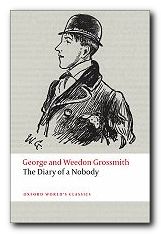
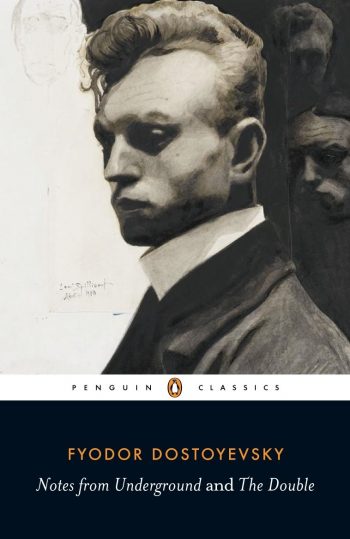
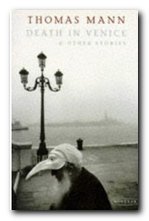 Thomas Mann’s Death in Venice (1912) is a classic novella – half way between a long story and a short novel. It’s a wonderfully condensed tale of the relationship between art and life, love and death. Venice provides the background for the story of a famous German writer who departs from his usual routines, falls in love with a young boy, and gets caught up in a subtle downward spiral of indulgence. The novella is constructed on a framework of references to Greek mythology, and the unity of themes, form, and motifs are superbly realised – even though Mann wrote this when he was quite young. Later in life, Mann was to declare – ‘Nothing in Death in Venice was invented’. The story was turned into a superb film by Luchino Visconti and an opera by Benjamin Britten.
Thomas Mann’s Death in Venice (1912) is a classic novella – half way between a long story and a short novel. It’s a wonderfully condensed tale of the relationship between art and life, love and death. Venice provides the background for the story of a famous German writer who departs from his usual routines, falls in love with a young boy, and gets caught up in a subtle downward spiral of indulgence. The novella is constructed on a framework of references to Greek mythology, and the unity of themes, form, and motifs are superbly realised – even though Mann wrote this when he was quite young. Later in life, Mann was to declare – ‘Nothing in Death in Venice was invented’. The story was turned into a superb film by Luchino Visconti and an opera by Benjamin Britten.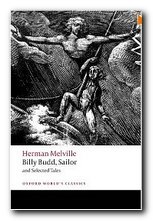 Herman Melville’s novella Billy Budd (1856) deals with a tragic incident at sea, and is based on a true occurence. It is a nautical recasting of the Fall, a parable of good and evil, a meditation on justice and political governance, and a searching portrait of three men caught in a deadly triangle. Billy is the handsome innocent, Claggart his cruel tormentor, and Captain Vere the man who must judge in the conflict between them. The narrative is variously interpreted in Biblical terms, or in terms of representations of male homosexual desire and the mechanisms of prohibition against this desire. His other great novellas Benito Cereno, The Encantadas and Bartelby the Scrivener (all in this collection) show Melville as a master of irony, point-of-view, and tone. These fables ripple out in nearly endless circles of meaning and ambiguities.
Herman Melville’s novella Billy Budd (1856) deals with a tragic incident at sea, and is based on a true occurence. It is a nautical recasting of the Fall, a parable of good and evil, a meditation on justice and political governance, and a searching portrait of three men caught in a deadly triangle. Billy is the handsome innocent, Claggart his cruel tormentor, and Captain Vere the man who must judge in the conflict between them. The narrative is variously interpreted in Biblical terms, or in terms of representations of male homosexual desire and the mechanisms of prohibition against this desire. His other great novellas Benito Cereno, The Encantadas and Bartelby the Scrivener (all in this collection) show Melville as a master of irony, point-of-view, and tone. These fables ripple out in nearly endless circles of meaning and ambiguities. Artistically, the novella is often unified by the use of powerful symbols which hold together the events of the story. The novella requires a very strong sense of form – that is, the shape and essence of what makes it distinct as a literary genre. It is difficult to think of a great novella which has not been written by a great novelist (though Kate Chopin’s The Awakening might be considered an exception). Another curious feature of the novella is that it is almost always very serious. It’s equally difficult to think of a great comic novella – though Saul Bellow’s excellent Seize the Day has some lighter moments.
Artistically, the novella is often unified by the use of powerful symbols which hold together the events of the story. The novella requires a very strong sense of form – that is, the shape and essence of what makes it distinct as a literary genre. It is difficult to think of a great novella which has not been written by a great novelist (though Kate Chopin’s The Awakening might be considered an exception). Another curious feature of the novella is that it is almost always very serious. It’s equally difficult to think of a great comic novella – though Saul Bellow’s excellent Seize the Day has some lighter moments. Seize the Day (1956) focusses on one day in the life of one man, Tommy Wilhelm. A fading charmer who is now separated from his wife and his children, he has reached his day of reckoning and is scared. In his forties, he still retains a boyish impetuousness that has brought him to the brink of havoc. In the course of one climatic day, he reviews his past mistakes and spiritual malaise. Some people might wish to argue that this is a short novel, but it is held together by the sort of concentrated sense of unity which is the hallmark of a novella. It is now generally regarded as the first of Bellow’s great works, even though he went on to write a number of successful and much longer novels – for which he was awarded the Nobel Prize in 1976.
Seize the Day (1956) focusses on one day in the life of one man, Tommy Wilhelm. A fading charmer who is now separated from his wife and his children, he has reached his day of reckoning and is scared. In his forties, he still retains a boyish impetuousness that has brought him to the brink of havoc. In the course of one climatic day, he reviews his past mistakes and spiritual malaise. Some people might wish to argue that this is a short novel, but it is held together by the sort of concentrated sense of unity which is the hallmark of a novella. It is now generally regarded as the first of Bellow’s great works, even though he went on to write a number of successful and much longer novels – for which he was awarded the Nobel Prize in 1976.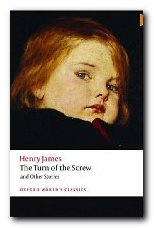 Henry James’ The Turn of the Screw (1897) is a classic novella, and a ghost story which defies easy interpretation. A governess in a remote country house is in charge of two children who appear to be haunted by former employees who are now supposed to be dead. But are they? The story is drenched in complexities – including the central issue of the reliability of the person who is telling the tale. This can be seen as a subtle, self-conscious exploration of the traditional haunted house theme in Victorian culture, filled with echoes of sexual and social unease. Or is it simply, “the most hopelessly evil story that we have ever read”? This collection also includes James’s other ghost stories – Sir Edmund Orme, Owen Wingrave, and The Friends of the Friends.
Henry James’ The Turn of the Screw (1897) is a classic novella, and a ghost story which defies easy interpretation. A governess in a remote country house is in charge of two children who appear to be haunted by former employees who are now supposed to be dead. But are they? The story is drenched in complexities – including the central issue of the reliability of the person who is telling the tale. This can be seen as a subtle, self-conscious exploration of the traditional haunted house theme in Victorian culture, filled with echoes of sexual and social unease. Or is it simply, “the most hopelessly evil story that we have ever read”? This collection also includes James’s other ghost stories – Sir Edmund Orme, Owen Wingrave, and The Friends of the Friends.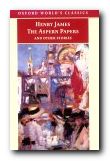 The Aspern Papers (1888) also by Henry James, is a psychological drama set in Venice which centres on the tussle for control of a great writer’s private correspondence. An elderly lady, ex-lover of the writer seeks a husband for her plain niece, whereas the potential purchaser of the letters she possesses is a dedicated bachelor. Money is also at stake – but of course not discussed overtly. There is a refined battle of wills between them. Who wins out? Henry James keeps readers guessing until the very end. The novella is a masterpiece of subtle narration, with an ironic twist in the outcome. This collection of stories also includes The Private Life, The Middle Years, and The Death of the Lion which is another classic novella.
The Aspern Papers (1888) also by Henry James, is a psychological drama set in Venice which centres on the tussle for control of a great writer’s private correspondence. An elderly lady, ex-lover of the writer seeks a husband for her plain niece, whereas the potential purchaser of the letters she possesses is a dedicated bachelor. Money is also at stake – but of course not discussed overtly. There is a refined battle of wills between them. Who wins out? Henry James keeps readers guessing until the very end. The novella is a masterpiece of subtle narration, with an ironic twist in the outcome. This collection of stories also includes The Private Life, The Middle Years, and The Death of the Lion which is another classic novella.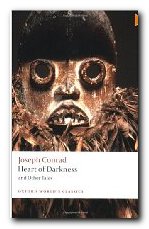 Joseph Conrad’s Heart of Darkness (1902) is a tightly controlled novella which has assumed classic status as an account of late nineteenth century imperialism and the colonial process. It documents the search for a mysterious Kurtz, who has ‘gone too far’ in his exploitation of Africans in the ivory trade. The reader is plunged deeper and deeper into the ‘horrors’ of what happened when Europeans invaded the continent. This might well go down in literary history as Conrad’s finest and most insightful achievement. It is certainly regarded as a classic of the novella form, and a high point of twentieth century literature – even though it was written at its beginning. This volume also contains the story An Outpost of Progress – the magnificent study in shabby cowardice which prefigures ‘Heart of Darkness’. The differences between a story and a novella are readily apparent here if you read both texts and compare them.
Joseph Conrad’s Heart of Darkness (1902) is a tightly controlled novella which has assumed classic status as an account of late nineteenth century imperialism and the colonial process. It documents the search for a mysterious Kurtz, who has ‘gone too far’ in his exploitation of Africans in the ivory trade. The reader is plunged deeper and deeper into the ‘horrors’ of what happened when Europeans invaded the continent. This might well go down in literary history as Conrad’s finest and most insightful achievement. It is certainly regarded as a classic of the novella form, and a high point of twentieth century literature – even though it was written at its beginning. This volume also contains the story An Outpost of Progress – the magnificent study in shabby cowardice which prefigures ‘Heart of Darkness’. The differences between a story and a novella are readily apparent here if you read both texts and compare them.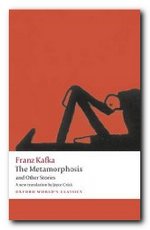 Franz Kafka’s Metamorphosis is the account of a young salesman who wakes up to find he has been transformed into a giant insect. His family are bewildered, find it difficult to deal with him, and despite the good human intentions struggling underneath his insect carapace, they eventually let him die of neglect. He eventually expires with a rotting apple lodged in his side. This particular collection also includes Kafka’s other masterly transformations of the short story form – ‘The Great Wall of China’, ‘Investigations of a Dog’, ‘The Burrow’, and the story in which he predicted the horrors of the concentration camps – ‘In the Penal Colony’.
Franz Kafka’s Metamorphosis is the account of a young salesman who wakes up to find he has been transformed into a giant insect. His family are bewildered, find it difficult to deal with him, and despite the good human intentions struggling underneath his insect carapace, they eventually let him die of neglect. He eventually expires with a rotting apple lodged in his side. This particular collection also includes Kafka’s other masterly transformations of the short story form – ‘The Great Wall of China’, ‘Investigations of a Dog’, ‘The Burrow’, and the story in which he predicted the horrors of the concentration camps – ‘In the Penal Colony’.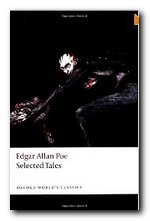
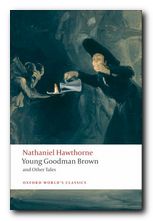
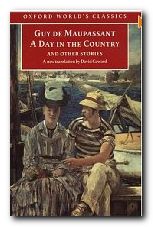
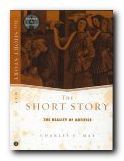
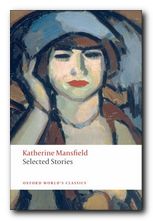 Katherine Mansfield
Katherine Mansfield
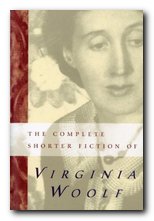
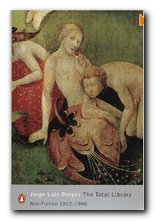
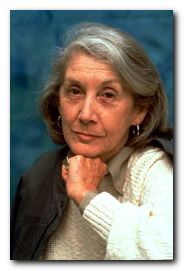 Nadine Gordimer
Nadine Gordimer